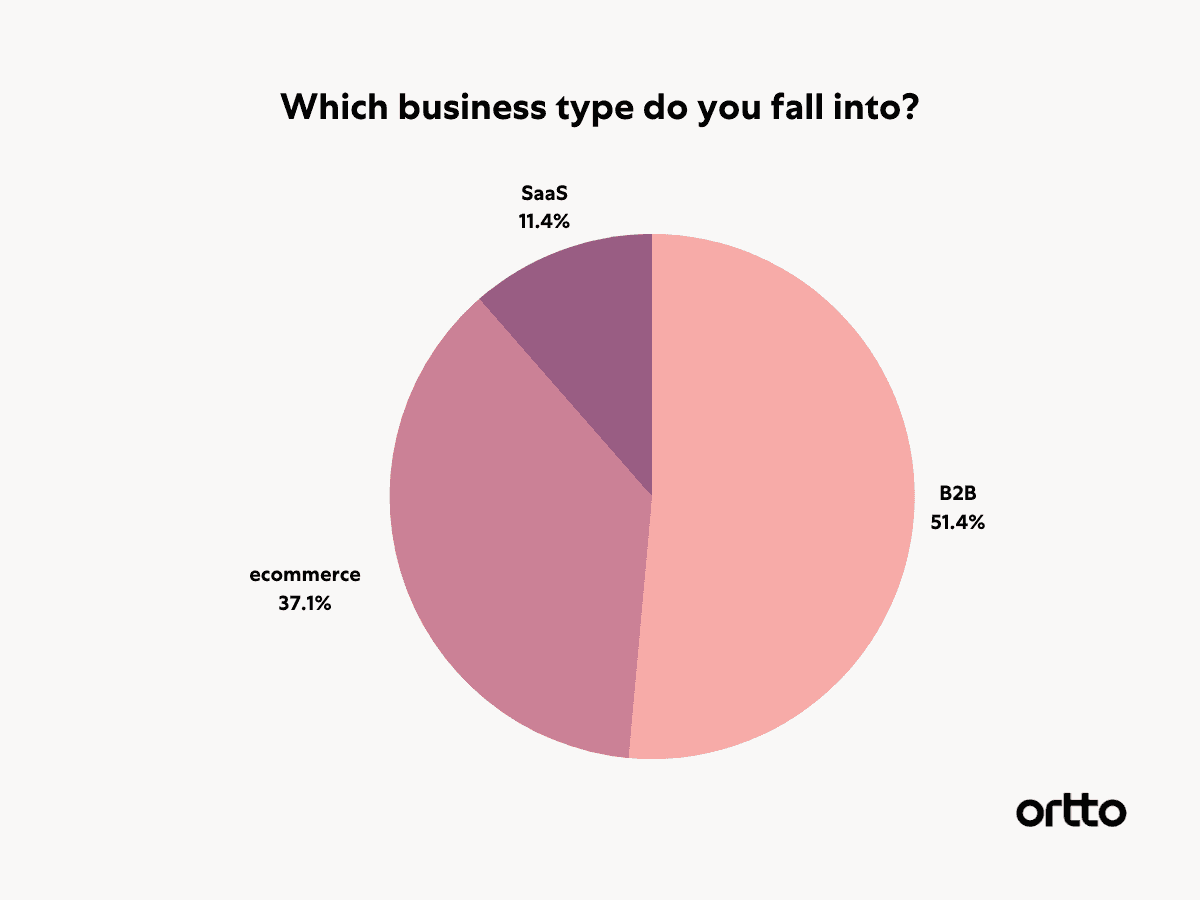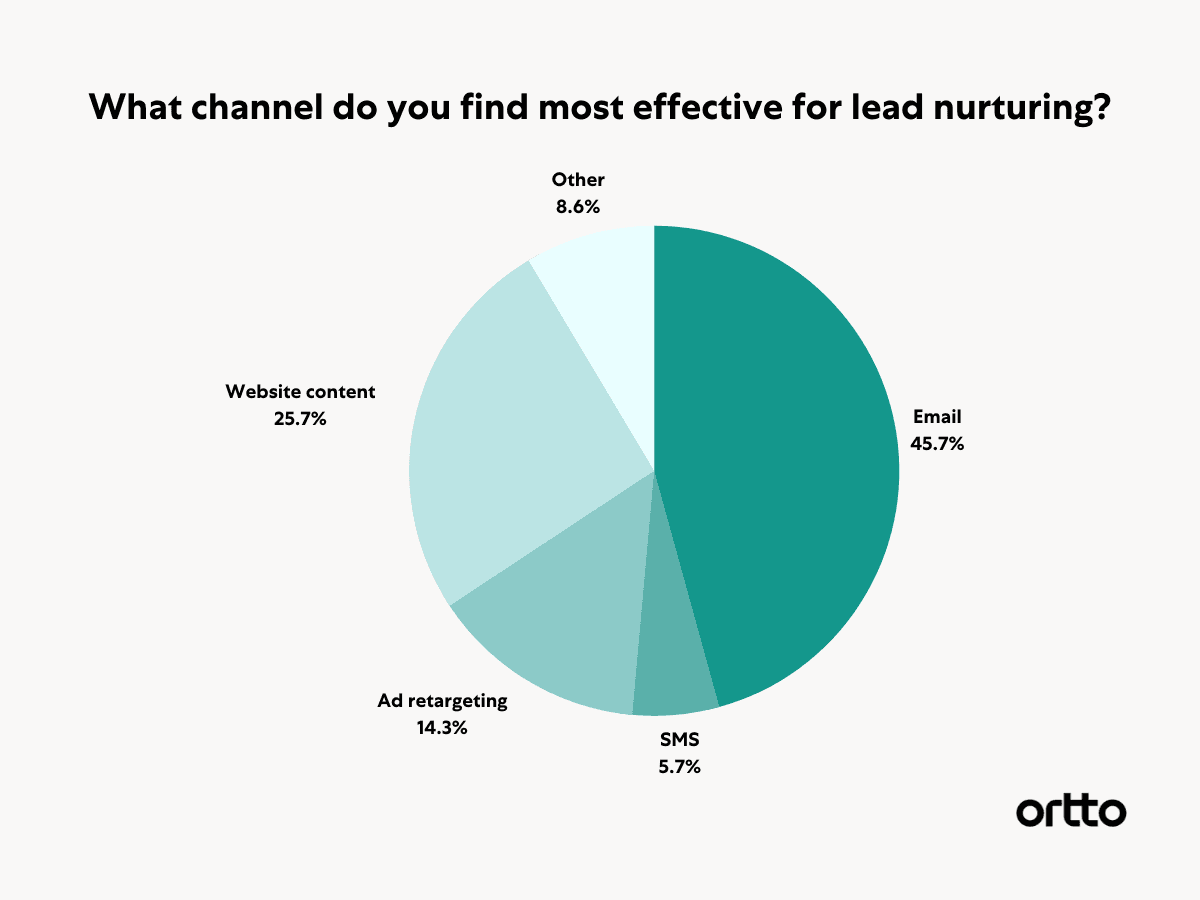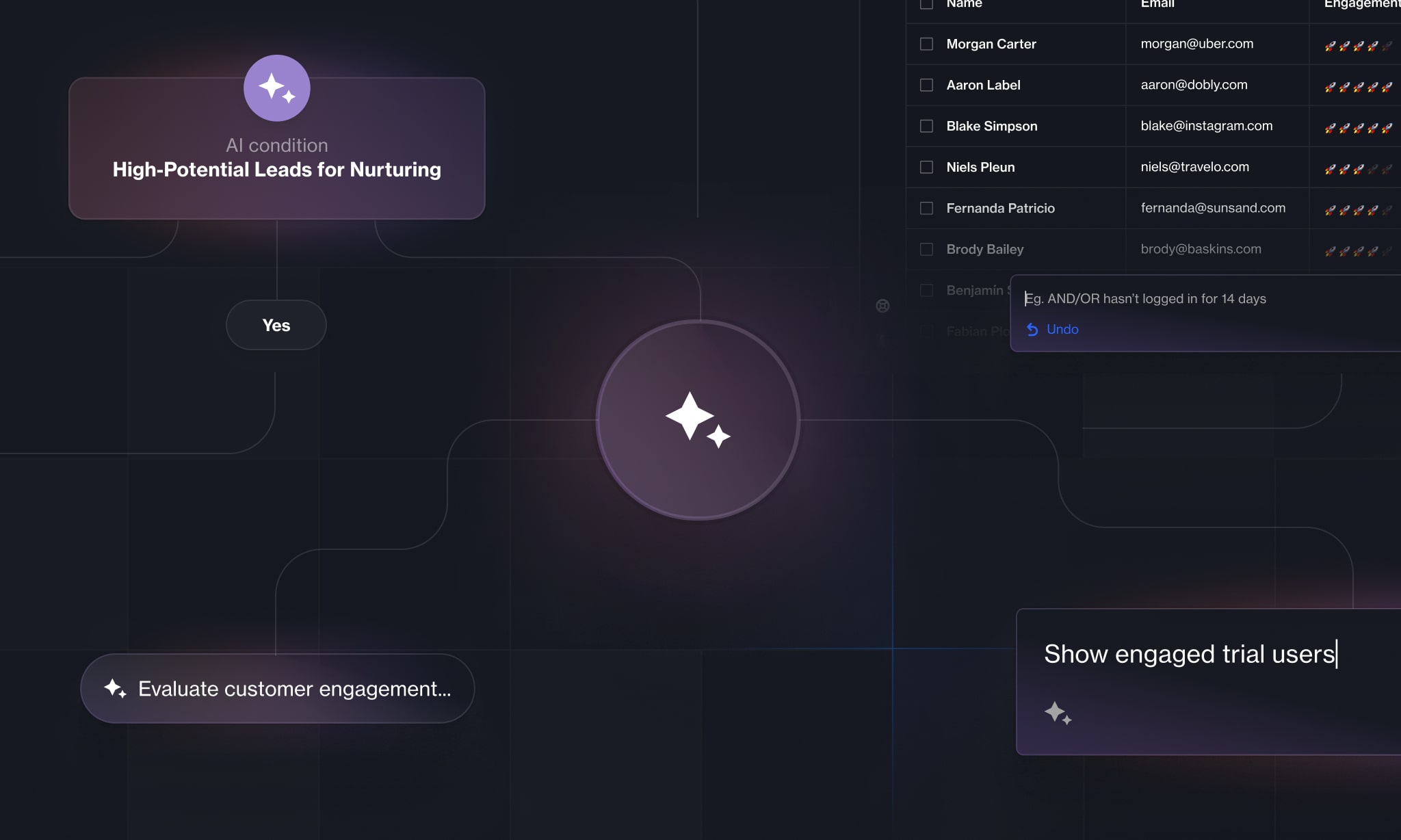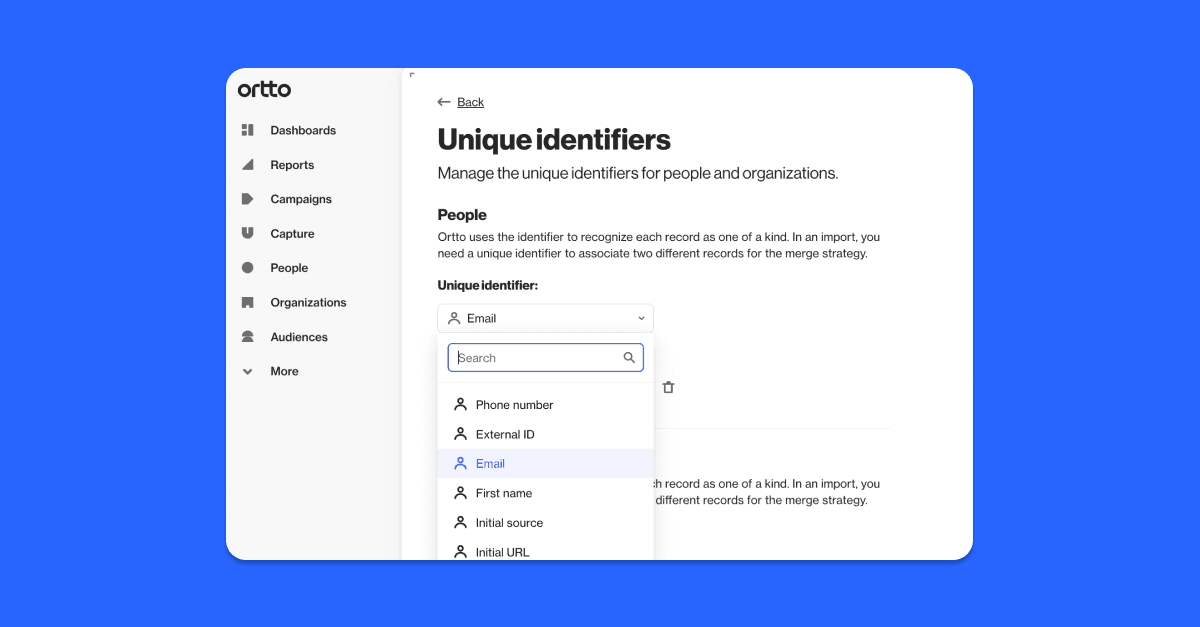Did you know that 80% of new leads never actually translate into sales? That’s a lot of resources wasted on leads that yield no return. However, companies that excel at lead nurturing generate 50% more sales-ready leads at a 33% lower cost.
Lead nurturing is the process of engaging and educating your target audience through purposeful and meaningful interactions at different stages in the customer journey.
Lead nurturing looks different for every business because their audience has specific needs and pain points, and can happen on a variety of channels including email, SMS, ad retargeting, website content and social media. Despite the difference in approach, the goal is the same every time: to convert leads into customers.
However, it helps to get inspiration from those who have tested different lead nurture tactics and found success.
We surveyed 35 marketing professionals, CEOs, and founders across a mix of B2B, SaaS, and ecommerce companies on ways they nurture their leads. Among those we spoke to, more than half fell into B2B, 37% were in ecommerce and 11.4% were in SaaS.

When we asked respondents what their preferred channel was for lead nurturing, there was a clear winner. Email was favored by a large majority of survey respondents: 16 out of 35 (45.7%).
Coming in at second place was website content (25.7%), followed by ad retargeting (14.3%). Two respondents (5.7%) said that SMS was their favoured channel for lead nurturing.

While SMS and social media (which scored zero in the survey) were not ranked highly, they are still considered important channels for lead nurturing when combined with other channels.
Among the responses to the survey, there were some recurring themes:
Personalization
Targeted content
Omnichannel approach
You will notice these themes popping up again and again as we look at each lead nurturing channel in isolation: how it is used and tips for boosting its effectiveness.
4 lead nurture channels
Email is widely considered the most popular channel for marketing communications. More than half of the global population use email in 2022, and it has an unbeatable ROI when compared to other channels. In fact, for every $1 you spend on email marketing, you can expect an average return of $36. It’s therefore no surprise that marketers harness the power of email to nurture leads down the sales funnel.
Faizan Fahim, Marketing and Sales Manager at ServerGuy, is one of many marketers who favors email above other channels for lead nurturing. Fahim uses email to congratulate users on achievements, distribute relevant resources, and to ask for their insights on various topics.
Matt Lally, Founder of MattyAds, also considers email to be most effective, but points out that not every lead should be on your email list. “Don’t waste your time on unqualified leads,” says Lally. “Lead scoring is imperative for optimizing marketing spend and focusing sales resources.”
Lead scoring is the process of identifying and priortizing high-quality leads so you aren’t wasting energy and resources on cold leads. It also enables marketers to accurately measure ROI by analyzing which channels and campaigns are producing the highest quality leads.
Another tip is to A/B test email subject lines to improve open rate, as suggested by email marketing consultant Zach Grove: “Subject lines are the biggest lever you have to improve your sequences, period,” says Grove. “Take the time to write several variants of subject lines in your existing sequence, and test new subject lines for those emails – this is a quick win for any lead nurture campaign.”
Boris Jabes, CEO and Founder of data integration platform Census, highlights the importance of personalization within email marketing. “Address your prospects by name and tailor your content to their specific needs and interests,” says Jabes. “You can also use data from past interactions to further customize your communications.”
On the topic of personalization, Logan Mallory, VP at Motivosity, an employee recognition and engagement software, suggests personalizing emails based on the prospect’s behavior. “If a prospect signs up for a free demo, send them emails tailored specifically to that action,” says Mallory. “This means that the emails will be relevant and won’t come across as spammy of over sales-y.”
Mallory also stresses the importance of striking the right email cadence. “It’s important to time your lead nurturing sequence properly so that follow-up doesn’t happen too quickly, nor does too much time elapse between contact,” says Mallory. “Sending out a nurture message too quickly can cause a prospect to feel that you’re being pushy, while waiting too long runs the risk of them forgetting about the previous message.”
Website content
Website content can take many forms: landing pages, blog posts, ebooks and whitepapers, guides, podcasts, webinars, and so on. By developing content that appeals to your customers’ pain points, you can drive leads through different stages of the customer journey.
Many companies implement a content marketing strategy because it can supercharge business growth. It is proven to be effective for lead generation, and when you turn an unknown visitor into a known visitor, you can send them on a nurture journey.
David Bitton, Co-founder and CMO at rental property management software DoorLoop, considers top-of-the-funnel content as highly valuable. “Top-of-the-funnel content is targeted at consumers in the awareness stage,” says Bitton. “Here is where we present potential clients with information on relevant topics to educate and inform them. It helps us make a solid first impression and demonstrates the value our product can bring.”
For Ben Rollins, a TEDxSaltLakeCity speaker and Co-Founder of Axon Optics, an ecommerce business that created the original migraine glasses, effective lead nurturing is about providing “value-based content targeted to your buyer persona.”
“You must have a solid grasp of your target buyer and what they need,” says Rollins. “Once you have identified these things, create informative content that addresses your buyer persona’s pain points.
“For example, if you’re targeting migraine sufferers, you might create a blog post that discusses the different types of migraines and their causes. This would be followed by a helpful infographic outlining the best ways to ease migraine pains. Then, further down the funnel, you might provide a whitepaper that discusses the latest research on migraines and their treatments. Each content piece should be designed to help move the buyer one step closer to buying your product. In our case, that’s eyewear.”
Rollins suggests that distributing content across multiple channels – a blog, email newsletters, social media – ensures it is accessible and therefore more likely to be consumed.
Jabes also believes that content is key. “One of the best lead nurturing tactics is to develop targeted content that is relevant to the interests of your prospects,” says Jabes. “This can include blog posts, ebooks, infographics, or you can invite prospects to attend webinars or other events where they can learn more about your product or service.”
Ad retargeting
Ad retargeting is another popular channel for lead nurturing. Retargeting is a type of pay-per-click advertising that displays ads to users who have previously visited your site, while they are browsing other sites.
Retargeting ads are designed to retarget leads with a personalized call to action, unlike traditional ads which are intended to attract new traffic.
George Panayides, Managing Director at The Digital xx, utilizes ad retargeting above other channels. He told us about a successful lead nurturing initiative implemented through Facebook:
“We’ve had success by creating different engagement stages on Facebook. We run a broad video ad across a large audience with different interests. We keep this extremely broad to maximize its reach and cost. If a user watches more than 50% of our video, we will move them into the next stage of our nurture journey. Once we have a large enough audience, we will then show ads for an article, FAQ page or other value-based content. The users who engaged with, viewed or considered our content will go through to the final stage, which is where they will receive our offer for the service/product we are selling.”
Panayides does add a caveat: “It takes time to build out the audiences to ensure they are big enough for the pixel to perform.” He also reiterates that keeping the first audience broad will result in a faster collection rate.
Eva Chung, Web Marketing Lead at tech staffing agency Advantis Global, also believes in the effectiveness of ad retargeting to get a brand’s name out there. “On average, it takes 7-10 touch points before someone converts,” says Chung. “As a result, it’s important to make your online presence loud and clear. We use a variety of outlets, from social media, advertising, email, influencer marketing, and employee advocacy.
“Throughout every step of the journey, we have an ad set up to push them further. Our retargeting ads focus on any pain points that may stop them pursuing our services.”
Chung also notes that her industry is challenged with hiring scams, so accounts for this when developing ads. “We have a variety of retargeting ads that regularly get swapped out for different messaging and designs to keep it fresh and not ‘spammy’.”
SMS
SMS marketing is gaining popularity because it is cost-effective, has a fast delivery rate and high engagement. Companies use SMS to send promotional or transactional campaigns to consumers.
Lane Rizzardini, Co-Owner of Marion Relationship Marketing is one marketer who realizes the value and emerging popularity of SMS. “People can’t ignore a text message, with open rates at 99%, and 97% within 15 minutes,” says Rizzardini. However, while open rates are high, effectiveness isn’t guaranteed. “The downside is it’s difficult to provide value in a short text, and it can seem more intrusive,” warns Rizzardini.
4 additional takeaways
Our survey respondents were generous with their insights on lead nurturing, so below are four more tips to take onboard.
1. Segment your leads
Anthony Vaccaro, VP for US Sales at workforce management solution Timewatch®, who favours a combination of email and text messaging for lead nurturing, points out that segmenting your leads will result in more sales.
“It’s important to remember that not all leads are created equal, so you need to have a system in place that allows you to segment your leads based on their interest and the likelihood of converting,” says Vaccaro. “Once you’ve got your leads sorted into meaningful groups, you can start sending them personalized messages at the right time. This will help you nurture your relationship with the lead until they’re ready to buy from you.”
2. Use hyper-personalization
It is generally understood that personalizing emails, content, ads, SMS, etc. is best practice, but to increase the likelihood that a lead will convert, take personalization up a notch. Grove suggests personalizing case studies:
“Case studies are powerful tools for demonstrating proof and expertise. However, not enough lead nurture campaigns personalize which case studies they include. If you suspect that a lead is in a certain industry or is interested in a specific topic (based on an initial lead magnet they downloaded or pages on your site that they’ve visited), send them case studies that are tailored to what you know about them. This ultimately increases open rates, click-through rates, and lead conversion rates.”
3. Take an omnichannel approach
Most marketers don’t use just one channel for lead nurturing – they harness multiple channels in tandem to help boost brand awareness and educate leads about their products and/or services.
Ortto users can easily integrate their data sources to create a single customer view, build omnichannel marketing campaigns, and deliver remarkable, personalized experiences across the entire customer journey.
4. Provide ongoing support
It’s not enough to map out a lead nurture campaign and then kick back and relax. Jabes notes how important it is to be on-call to answer support queries. “Always be available to answer questions and address concerns that prospects may have.” says Jabes. “This could mean setting up a live chat feature on your website, or offering customer support via phone or email. By being responsive and helpful, you can build trust with potential customers.”
Final word
The responses to our survey have proven the lead nurturing has no bounds. Marketers are continually testing, failing, and succeeding when it comes to lead nurturing, and are coming up with innovative ways to engage leads and guide them to purchase.
Hopefully, you have taken some inspiration from these insights and have success with your own lead nurturing processes. To find out how Ortto can automate lead nurture journeys, sign up for free today.
*All data taken from a survey of 35 marketing professionals conducted by Ortto in July 2022
Author

More by Ellie Wiseman
Ellie Wiseman has no more articles


